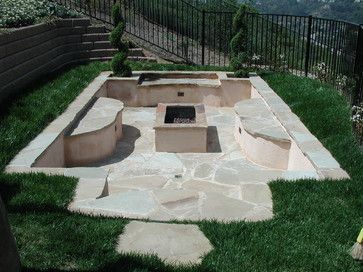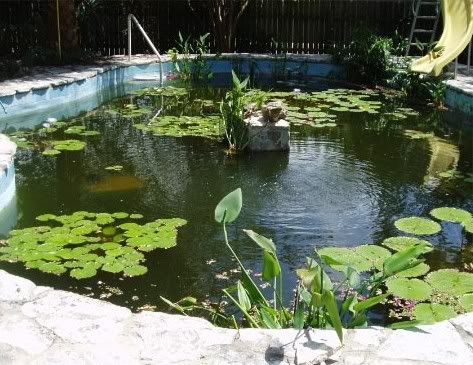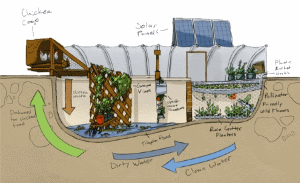In the heat of summer, nothing’s more refreshing than a dip in your very own pool! Whether you leisurely float while reading a book, or swim laps to build strength and cardio, having a pool can be like having your own mini vacation (or gym) in your very own backyard. However, a swimming pool can be expensive, both to install and to maintain, which raises the question: is the expense of a swimming pool worth it? Or does the splash fall short?
Pools and Home Value
There are many factors to consider when debating whether or not you want your own pool. Your own enjoyment may be at the forefront of such a decision, but another thing to keep in mind is the return on any investment that you spend. According to HGTV.com, “an average 14x28-foot inground concrete pool potentially adds 5 to 8 percent to the real estate value of your home.” That means that a $500,000 property could gain an extra $25,000 to $40,000 in value. However, pools don’t come cheap – the average cost of installing such a pool is $50,000. And whether or not you see that increase in value depends on multiple factors, such as the current housing market, how well the pool has been maintained, and whether or not the surrounding properties have pools.
Yearly Pool Costs
Pools need to be maintained, cleaned, filtered, and sometimes even heated. How much can you expect to spend on yearly pool costs? HomeAdvisor breaks down the following averages:
Pool Opening – between $300 and $600 - “Opening” a pool means a thorough cleaning needs to be done after the pool has been untouched for a period of time, usually over the winter months. Once the pool has been opened, it’s ready to use!
Cleaning – between $80 and $150 – Cleaning is usually done weekly, biweekly, or monthly, depending on how often the pool is used and your own personal preference.
Closing – between $300 and $600 – Closing the pool for the winter months helps to protect equipment. The pool’s safety cover will also be put on.
Repairs and Other Expenses – between $140 and $665
Looking at these costs, pool owners can expect to spend between $820 and $2,015 per year on pool maintenance. Of course, a variety of factors will affect your actual cost (you’ll spend less if you clean the pool yourself, and you’ll spend more if your pool filter breaks unexpectedly). Location will also determine the cost of pool services – if you’re interested in having your own pool, it’s not a bad idea to talk to a few pool companies in the area to get the average cost of their services.
Inground versus Aboveground Pools
When making the decision, you may also consider the benefits of an inground versus aboveground pool. Here is a quick comparison list:
| Inground | Aboveground |
| Longer installation time – generally 6 to 8 weeks | Faster installation time – as little as 1 day, but more often a couple of days to a week. |
| More expensive – average cost of $50,000 | Cheaper – Average cost of $3,000 to $4,000, but sometimes as little as $900 for do-it-yourself options. |
| Installation can be tricky if the ground has excessive bedrock, sand, or marine clay, or if the pool will be located at or near sea level, ground water, or a high water table. | Installation is less complicated, and surrounding decking or landscaping can be included to give the pool a sunken look. |
| Inground pools are meant to last 50 years or longer, and typically need to be refurbished about once every 25 years, depending on the type. They are complicated and expensive to remove, however. | Above ground pools can either be temporary (lasting around 5 years) or permanent (lasting up to 25 years). Both options are easier to remove than an inground pool. |
| Many people often feel that inground pools are more aesthetically pleasing. Further, inground pools can have special features (such as an attached hot tub, water fall, special colors, or special shapes) that may not be available with an aboveground pool. | Aboveground pools can have basic features, including lights, heaters, and automatic cleaners, but are often limited in specialized features or customizations. |
Aboveground and inground pools have slight differences in maintenance and safety. Typically, inground pools have more advanced pumps and filters, but similar filters can be installed on aboveground pools as well. Aboveground pools can also have ladders locked to help prevent access. However, both pool types should have a safety fence at all times and a safety cover when not in use.
How to get rid of an unwanted inground pool
Say you have an inground pool that you want to remove, for whatever reasons. Is it possible to do so? The answer is yes, and you have a couple of options. You can either have the pool filled in for an average cost of $5,000, or removed entirely for an average cost anywhere from $9,000 to $19,000.
Or, if neither of these options interest you but you still don’t want to have a pool to swim in, you may be able to utilize one of these ideas!



“Airbnb” for Swimming Pools
As seen above, having your own pool can be expensive, both to install and to maintain. However, Swimply is one company that benefits both pool owners and those who want to use a pool. It’s been described as the “Airbnb of swimming pools.” Pool owners can share pictures of their water facilities with descriptions, and interested guests can request the use of a pool by the hour. Owners can approve the requests, and guests are only charged once they approve the appointment. Once confirmed, information such as address, parking availability, and even WiFi passwords become available. Simply go to the pool location and then enjoy the use of the private pool, without all the expense! On the other side, pool owners can use their pool to help pay for some of the upkeep.
Let It Sink In
So, is having your very own swimming pool worth it, and if so, is inground or aboveground the way to go? In the end, a variety of factors determine such a decision, including the cost of installing a pool (or purchasing a property with a pool already), as well as the cost of maintenance and upkeep. Your own enjoyment and use of the pool should be carefully considered – after all, you can’t put a price on all those summer memories you’ll spend enjoying your backyard oasis! If you decide to go ahead and get a pool, you may even be able to earn some money through apps like Swimply, or if a pool isn’t for you, you can utilize Swimply for whenever you feel like you need a refreshing swim. And if you have an old pool that no longer serves it’s original purpose, you may be able to think outside of the box and create a unique backyard feature, such as a fire pit or koi pond. Here’s to hoping your summer is a splash!






















